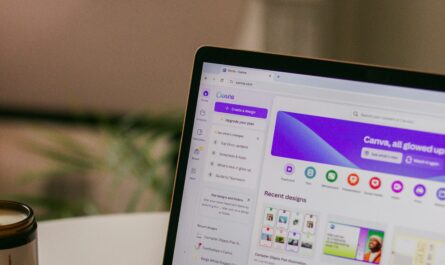Taylin Minnaert
A luxury I get from writing this post at the end of the term is the curriculum knowledge from our past 10 weeks of class. I have been reflecting on this winter term and the various skills we learned in #sojcssm throughout it. For one, I think I am physically incapable of writing “sojcssm” without placing a hashtag before it. More importantly, we covered so many topics, spanning from influencers to virtual reality to data analysis. Although there was a variety of intriguing discussions, the one I found most interesting was our coverage of personas.
I was familiar with the concept of personas prior to J480, but upon delving deeper into the tactic, I appreciated learning about the humanity that translates into the online world. Business professor Doug Wilson spoke to our class on Monday about the infinite data companies are receiving from us daily, and the personas they have created from it. It’s easy to forget there are humans on the other side of our phone screens, or even on the other side of the advertisements that plague our social media feeds. However, it’s a cool thing when you stop and think about how those ads were curated specifically for your feed. 
Personas put consumers into specific categories without overgeneralizing the things that make them unique. This way, companies like Pedialyte can market to moms worried about their children’s well-being, and also to millennials worried about their Sunday scaries. Personas are a hugely helpful tool in identifying your audiences and how to best market to them. If I were to have a persona created after me, it would be; “Taylin, 21, earning a degree in public relations, often spends weekends at college bars but always prioritizes her schooling first, can’t say no to brunch or any other aesthetically pleasing meal that will look good on the gram, cares about the environment but isn’t sure about where to start saving it, loves dogs, loves her family more, cherishes friendships and trending memes.” Something along those lines.
When companies identify the types of people interacting with their brand, they are better equipped to attract more of those people. Personas are an impactful way to not only reach your audiences, but to make your message stick with them. A lot of the human connection can get lost in digital translation, and it’s important to remember that it’s the human connection that led to an interaction in the first place. After explaining the persona of “Kyle,” Doug told our class that there is usually a woman behind every Kyle who is helping him make his decisions. It is these relationships that influence our daily lives and the choices we make. Kyle may make his decision for a new car with the help of his wife; Mary, who wants to provide the best for her child, might make her decision of baby wipes based on their eco-friendliness, and I might make my decision on a brunch spot based on my friend’s rave reviews.
The things that make us human can easily translate into the nonhuman digital world, companies just need to identify what those things are and why we have them. Generalizing the millions of intricacies of a person’s life is much easier said than done, but is the first step in generating quality content for your audiences. I feel so fortunate to have taken #sojcssm and learned from not only Kelli, but also from guest speakers we’ve had the privilege of listening to. Our class curriculum will stick with me for a long time, as I enter the professional world in just three short months, but personas will stick with me for a lifetime. And yes, I will be categorizing all of my friends into personas from now on. If you’d like any updates on what those personas are or need brunch spot recommendations, follow me on Twitter or add me on LinkedIn.




Great wrap up post for the term! I love how you created your own persona. What would be the persona for our class? Very well written and engaging.
Thank you for writing about this! I love how you used what we learned in class to make a persona about yourself! I agree with you in that personas are something we will be able to apply to our daily lives from here on out. Live, love, #sojcssm
Awesome post! I had no idea Pedialyte was actively marketing to Millennials avoiding hangovers now, which I find both interesting and entertaining. Your persona was great and I completely agree with your points on the human connection being a significant driver in marketing. Companies will have to ensure they maintain that connection as we trend more towards AI and machine learning.
I like that you described your own persona! It made me think of personas not only as an interpretation of data, but also an interpretation of our own personal brands– something we are often encouraged to do in the SOJC. Thinking of my personal brand in terms of a persona makes it easier for me to step out of my own head and think of how a company or future employer might describe me.
Ditto to Aaron’s comment above. This was a nice write up to end the term on a reflective note. I found the Pedialyte post funny especially since I’ve using this remedy for years. Best of luck in your future career!
Great summary and over-view of the term!! This course has provided so much information that we can actually apply in the real world and it was awesome that you showed how you will apply it when you created your own persona.
During a lecture, I noticed a student tweet about how personas shouldn’t cant be confused with stereotypes in the context of what type of people play video games. What do you think can be done to make sure that we are doing our best to not stereotype people when we are identifying personas.
I love that you made your own persona- you manage to be funny while still keeping it professional and descriptive! Thanks for a great little wrap up of the term, I hope you’ll keep us updated of your future ventures into the real world (of course, with the use of #sojcssm).
Great post. I really enjoy the Pedialyte persona that they have created for particularly the college students. For so long they were known as a baby drink and something to drink when sick. The graphic that you link to demonstrates that they have an understanding of their key audience. Furthermore, it allows them to share their product and market it in a way that targets me as a consumer.
Great recap! I agree, the personas were my favorite part. Thanks for sharing the pediolyte ad! I saw that on my newsfeed recently and also made the connection.
If there was one thing that will stick with me from this course, it would be the personas. They’re always interesting because like you highlighted—it creates a human experience in a world that sometimes loses that human aspect. Social media can be a double-edged sword with that. I will also carry what I learned this term in #SOJCssm for the rest of my professional career.
I couldn’t have summarized the last ten weeks any better myself. We learned SO much – it was actually super helpful to read this and refresh my mind! I also really enjoyed Doug Wilson’s lecture, and I think it will probably stick with me more than anything else from this term. Thanks for the great read!
Love this post! I throughly enjoyed this class and I am so sad that it’s over. We really did learn a lot of interesting concepts, especially the personas. The way personas are described honestly sounds like a meme, and I know this generation loves memes!
Thanks for this post! I loved the part where you had mentioned millennials being scared of the “Sunday Scaries” and fixing it with Pedialyte, clever. Putting consumers into categories is a great strategy for personas to use.
Great summary of the past 10 posts! I love the persona you wrote for yourself, especially the part about wanting to save the world, but not really sure how – that explains so many of us so well. To me, your recognition of the humans behind the personas shows the depth of your understanding of the practice…which will set you up well for a career in public relations!
I love this post! I never took the time to truly think of people behind advertisements in a positive light. You were able to help me see the positive by reminding us that the ads were specifically created for us based on the persona that the data has given them. I also really enjoyed your persona that you developed of yourself, it made the piece more personal.
As with most in our class I absolutely loved learning about personas and how specific they get as well as how simple and effective they are to utilize when trying to accomplish marketing goals. I have to say I find it a bit nerve-racking knowing how much data is out there yet intrigued at all the good you can do with it. I really liked your highlight on humanity still being extremely important to online marketing. Great article.